Expedition to the ancestors. Difficult roads across two continents
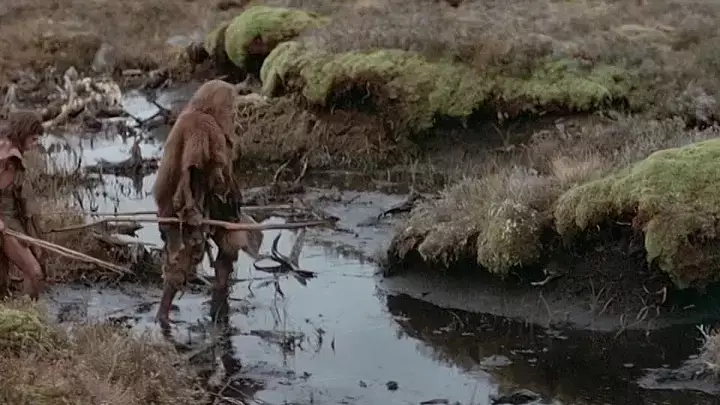
Still from the film “Fight for Fire” (1981)
each in the name of his god;
and we will walk in the name
Lord our God forever and ever.
Book of the prophet Micah 6:8
Migrants and migrations. We ended our last material with the fact that about 15 thousand years ago, ancient people crossed a land bridge to the land of North America, and then moved from north to south. That is, if we undertake to study the ancient history American continent, then it will be one continuous migration that lasted... thousands of years!
We have already managed to marvel at how the ancestors of the ancient Americans passed through the “bottleneck” between two glaciers. It is believed that its width of ice-free tundra was approximately 500 km. It is possible that a strong wind was blowing from the north at their back and thus urging them on, but you just have to imagine how long they walked like this?!
True, there is also a point of view that some of the Asian migrants moved along the coastal edge, between the ocean and the Cordilleran coastal shield. However, the coast there is nothing but rocks and cliffs, and strong storms with icy winds do not make anyone want to migrate this way. Although, of course, what the migrants of that time thought about this, we will never know!
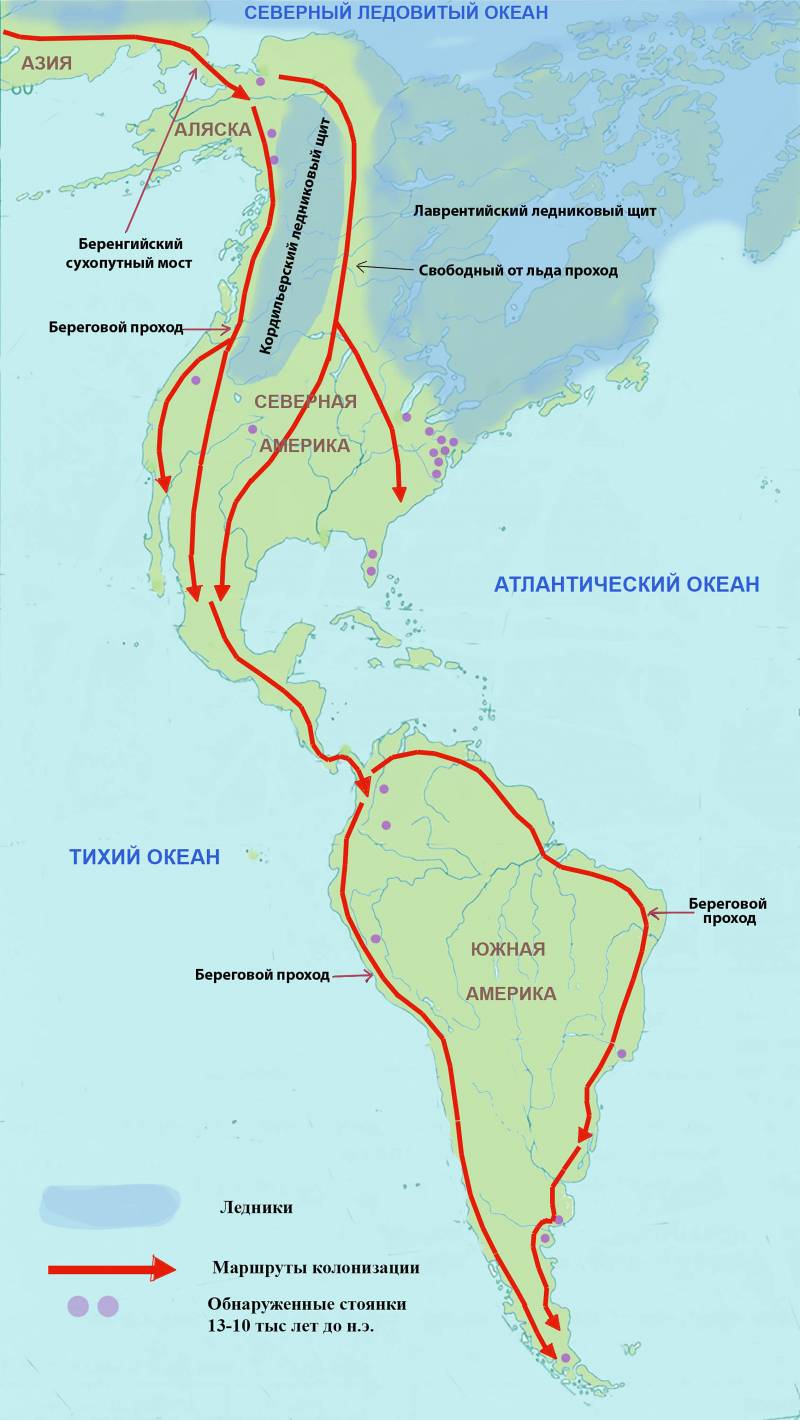
Map of the settlement of America. Of course, all the routes are depicted with a degree of convention, but it is known for sure that in both cases there were two of them. Rice. A. Shepsa
To the valleys, across the hills...
But you can imagine without guessing where all these people went when this thousand-kilometer journey was left behind. Some went further south, reached Mexico, and then, having passed the Isthmus of Panama, headed further.
Another part of the Asian migrants headed east along the edge of the glacier, where there were the richest hunting grounds and plenty of clean fresh water. After these people, quite a few of their sites remained in the eastern states of the United States and even in Florida.
By the way, those migrants who entered South America also split up. One stream moved through the territory of Brazil, again “straight south,” and the second flowed “over the mountains, along the valleys” of the Andes ridge or along a thin strip of coast. These two streams met near Tierra del Fuego (although, most likely, they approached there at different times).
For some reason, they crossed the stormy Strait of Magellan and settled on this island, one might say, on the very outskirts of civilization! By the way, one site of ancient people was found there, as well as in other places in South America, so their ancient paths can be considered established.
It is clear that the development of the jungle in the Amazon region required so much effort from them that their inhabitants still live there in almost Stone Age conditions. But not everyone stayed in this jungle, but went even further into the pampas!
But how and in what form did the human population begin to develop on the territory, first of all, of North America, where it was easiest for ancient migrants to get from the glacial passage?
Culture and time
It is believed that the first culture on the American continent was a certain culture that can be conventionally called pre-Clovis, which was then replaced by the fairly well-known Clovis culture.
Finds of products of this culture in the USA have different dates: from
13–400 years ago in the west, and from 12–800 years ago in the east. The oldest artifact found in Texas was made 12 years ago. That is, if we assume that the first settlers arrived in America 800 years ago, then they had approximately 12 years to settle and spread their Stone Age culture. That is, not so much by the historical standards known to us!
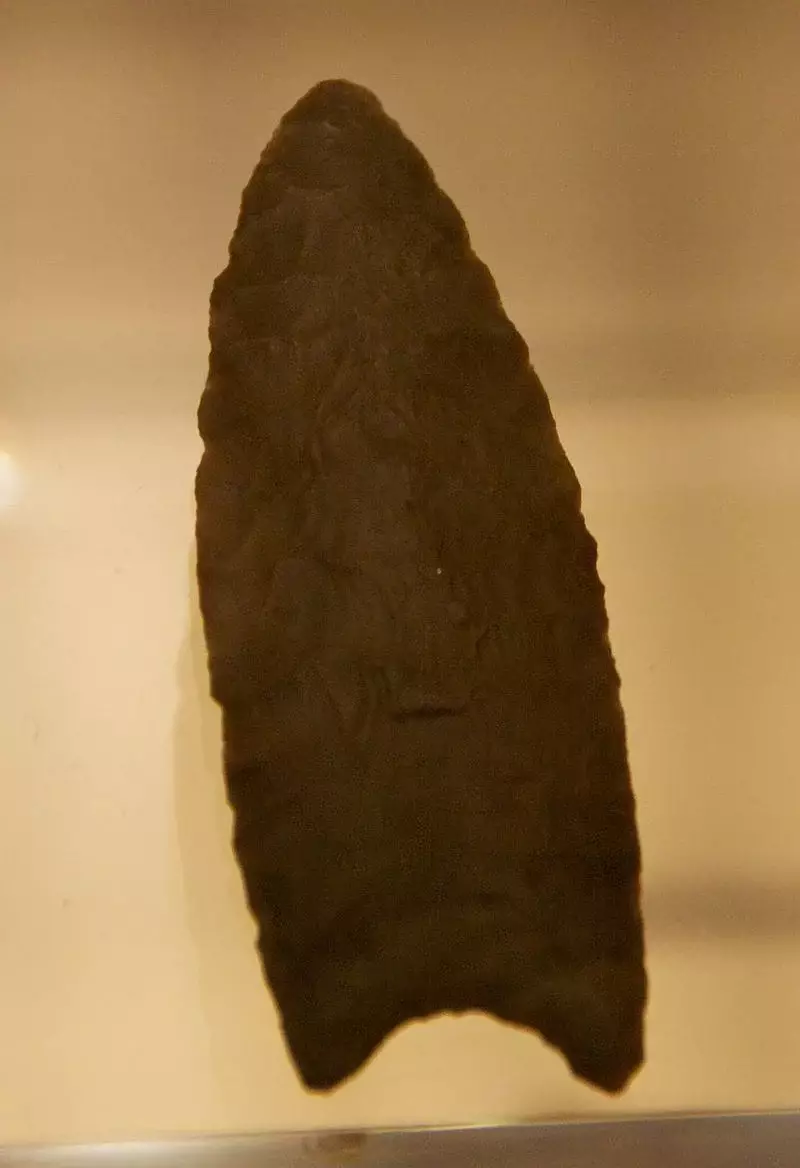
Clovis flint spearhead. Age, approx. 11 BC e. Found in Arizona. Length 000x2,98x8,5 cm. British Museum, London
Moreover, during this time they managed to “hone” the technology of making stone tools so much that today they are considered the most beautiful stone products, not only throughout the United States, but also in northern Mexico and southern Canada.
They were even given a name - “Clovis”, they are so different in appearance from similar products. Particularly good were the spear tips with a characteristic lanceolate shape, even with grooves for fastening to a wooden shaft.
Characteristic grooves...
By the way, archaeologists tried to secure tips of this type in shafts, and it turned out that they not only fit well into the splits, but also wrapped in a leather strap with hoof glue, they made it possible to obtain a very strong and reliable connection.
And they also made products from obsidian and chalcedony and quartz. Moreover, the place where the tip was found is sometimes located hundreds of kilometers from the place where such minerals were mined. This leads to the conclusion that the Clovis people were either nomadic, or there was active trade between their tribes. And if this is so, then this indicates the existence of a certain system of division of labor and the presence of modernly defined social institutions and communications.
Moreover, there are literally tons of different stone points in museums around the world. But... only the Clovis thought of making them with notches, which undoubtedly increased their labor intensity. But the consumer properties of such a tip were also higher.
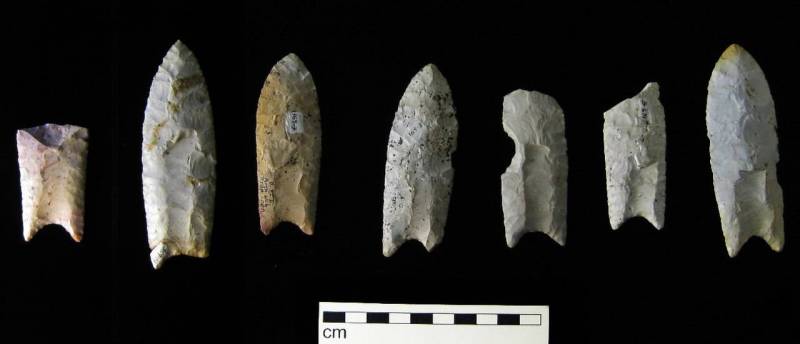
Spearheads from the Clovis culture. Ohio State Archaeological Collection Office
It should be noted that American scientists have something to study on their lands, although the antiquity of their finds cannot be compared with those in Africa and Europe.
Cavemen are the same everywhere. Just like the caves...
However, as in the Old World, a number of sites of ancient people were discovered in caves. For example, these are the Paisley Caverns, a complex of four caves in central Oregon in an arid and desert region north of the town of Paisley.
They were discovered back in the 1930s, but today, thanks to modern research methods, the finds there have revealed much more interesting things than before. In particular, it was here that artifacts of the culture that preceded the Clovis culture were found.
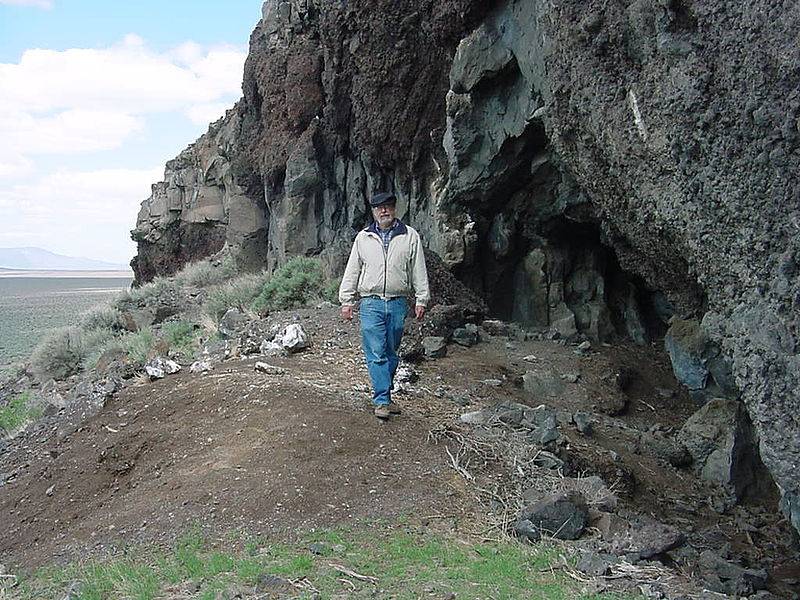
Pacey cave complex. One of the caves...
The Marms cave dwelling was first excavated in 1962. The age of the finds dates back to about 11 years ago, while this cave itself was inhabited... for more than 230 thousand years!
Judging by the bones, the inhabitants of the cave ate the meat of elk and deer, beavers, and also collected river shellfish. Interestingly, the dart marks on the bones of the prey showed that they flew at high speed, which means that they were thrown with the help of a spear-throwing stick - an atlatl. That is, already at that time this throwing device was known to the local aborigines!
Interestingly, analysis of plant pollen from the cave showed that after the glacier retreated about 13 years ago, the area was steppe. The steppe was replaced by mixed pine-spruce forests, but now this entire area is a prairie overgrown with wormwood.
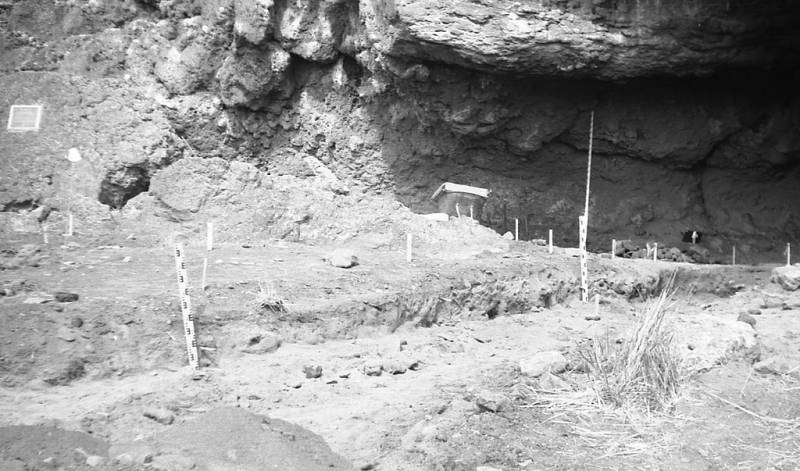
Fort Rock Cave. University of Oregon expedition photograph
Fort Rock Cave is also famous - a natural and archaeological reserve.
Ancient shoes of equally ancient Americans!
In this cave, another extremely interesting find awaited archaeologists: sandals 10 thousand years old, and, as recognized, these are the oldest surviving shoes in the world. Moreover, these sandals were not alone, several of them were found! That is, even then the inhabitants of this cave valued comfort and did not run barefoot over stones and thorns!
Back in 1938, traces of human habitation dating back about 13 years ago were found here. Moreover, a layer of volcanic ash was also discovered here, which was deposited into the cave as a result of a volcanic eruption about 200 years ago. Stone tools were also found here, and in addition to sandals, also... wicker baskets, that is, weaving was already fully mastered by the people of that era!

Clovis spearhead (British Museum, London)
Paleogenetics comes to the aid of archeology...
In 2013, an international group of scientists finally read the genome of the only known representative of the Clovis culture today - a two-year-old boy Anzick-1 (he was found in a burial covered with yellow ocher), who lived 12,5 thousand years ago in the territory of the modern state of Montana. It turned out that his Y chromosome belongs to haplogroup Q-L54, and his mitochondrial chromosome belongs to haplogroup D4h3a. Because his DNA was surprisingly well preserved, they were able to read the genome 14 times, which made it possible to almost completely eliminate the error. However, we didn’t manage to learn anything new. That is, the people of the Clovis culture, in genetic terms, turned out to be both relatives of the Indians living in North and Central America and the inhabitants of Asia.
A year later, the skeleton of a 15-year-old girl, who is believed to have lived 13 thousand years ago and who was found in 2007 on the Yucatan Peninsula in the flooded cave of Hoyo Negro, was also examined. Her mitochondrial DNA was obtained from her molars; studying it showed that American Indians belong to haplogroup D1, to which both the ancient primitive Clovis and some modern peoples living in Chukotka and Siberia belong!
So they walked and walked... And finally they arrived and found a whole huge continent for their descendants. But it’s unlikely that they themselves knew about it then...
However, we also don’t know where all the representatives of this culture disappeared to. What hypotheses have been invented to explain their disappearance, but scientists are still arguing about which of them is the most reliable!
To be continued ...
Information